Sandhill Crane Migration, be careful looking up
The Princess and I had the latest “Kellerman” novel playing through the truck sound system (for you older folks, you may remember this as the radio) as we ran the gauntlet of billboards educating us on adult stores in the area and attorneys handling bankruptcies or divorces. Starting any western adventure means we must drive across Missouri on I-70
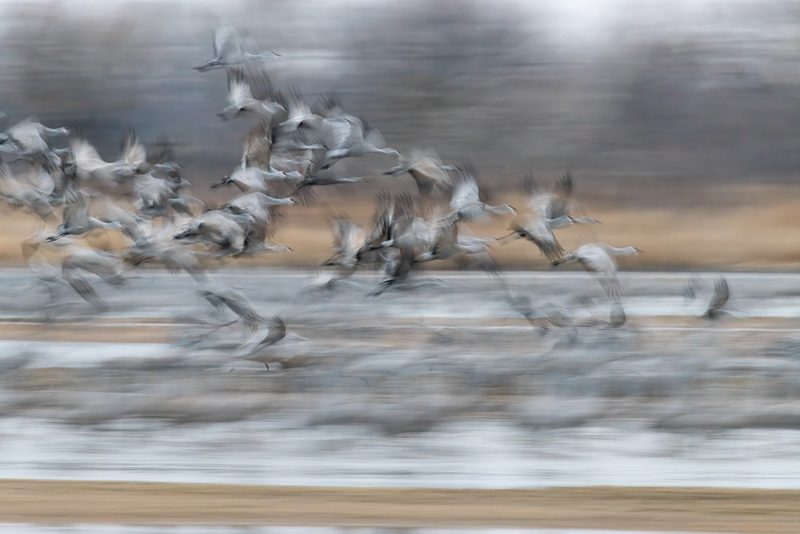
The cranes leaving the sandbar in the morning can be just a blur.
. We were headed out to Nebraska to witness one of the three largest animal migrations in the world. During several weeks in March, over 700,000 sandhill cranes pause on their journey north on the Platte River outside Kearney, NE, every year. The earliest record of this migration is a crane fossil found in Western Nebraska. The timing of the sandhill crane migration coincides with the spring thaw in the Platte River Valley, which creates the shallow water and wetland habitats that cranes need for feeding and roosting.
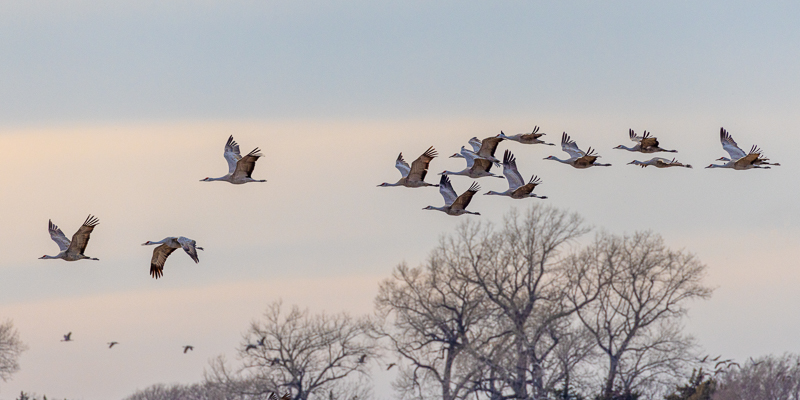
Cranes heading back to the river at sunset
Another reason the Sandhill cranes are drawn to the Platte River is the abundance of food available in the river valley. During their migration, the cranes primarily feed on leftover waste grain in agricultural fields along with small animals found in wet meadows and shallow wetlands. Oddly enough, they do not eat fish. The Platte River Valley provides a unique combination of these habitats, making it an ideal stopover site for cranes to refuel before continuing their journey. During their short stay in the area, they increase their weight by twenty percent, much like us during the holiday season.
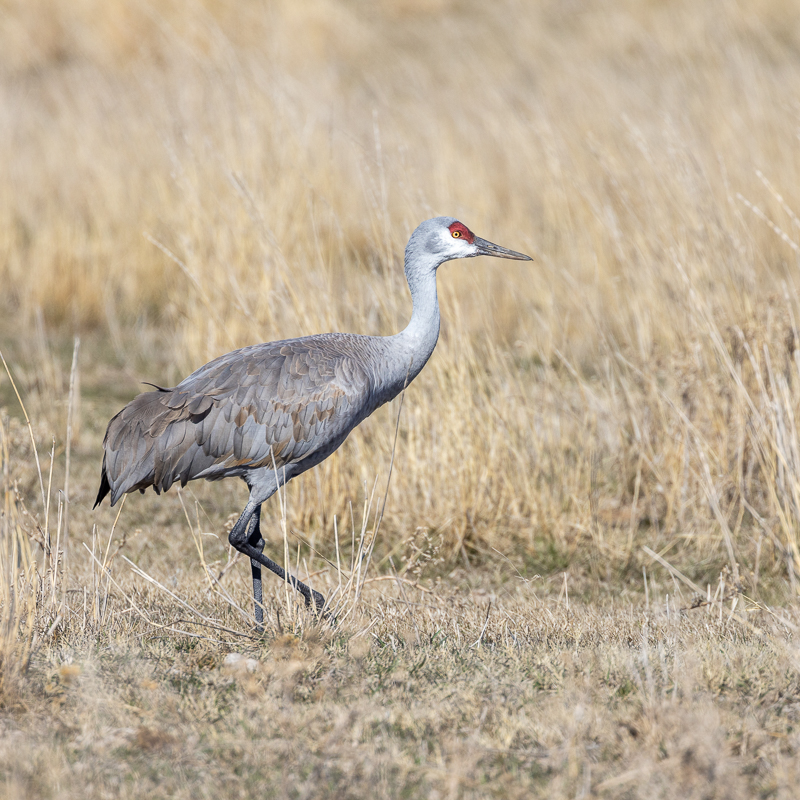
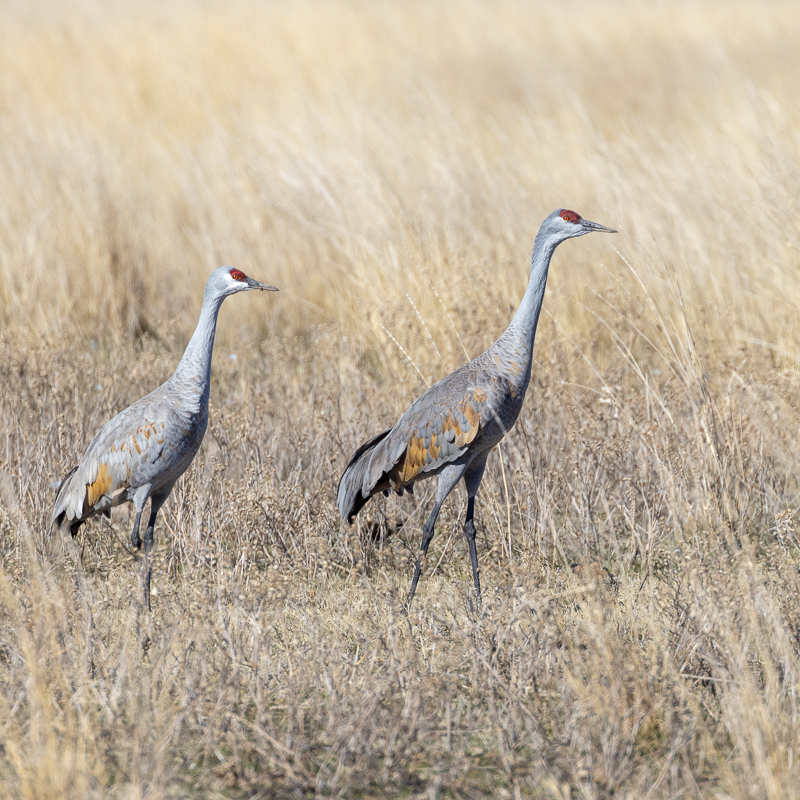
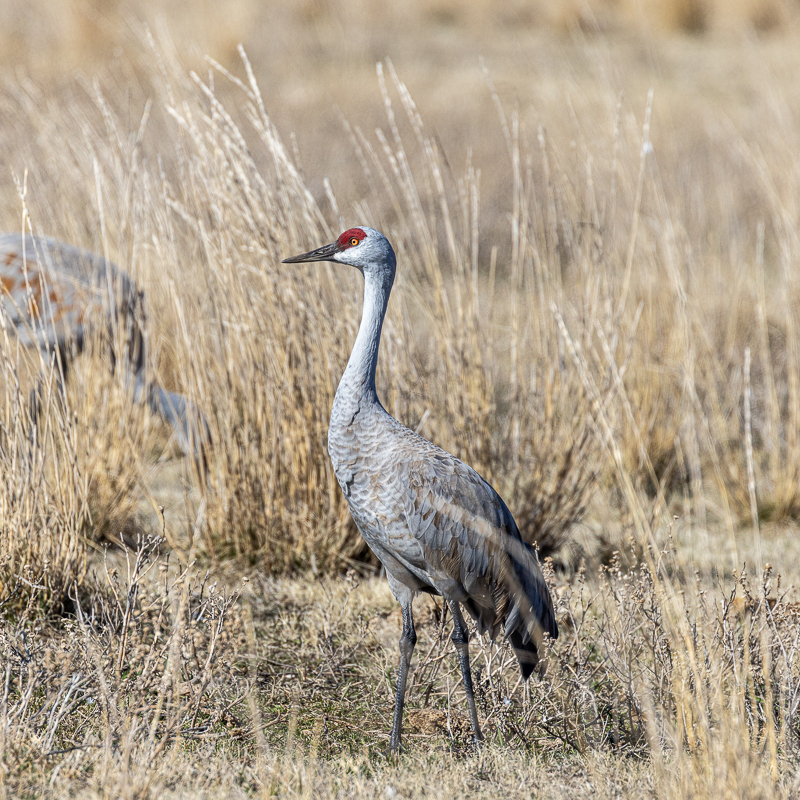
Notice the brown on the Crane in the middle photograph. The feathers are actually gray but the crane has added camouflage by painting itself with mud.
Another factor that draws sandhill cranes to the Platte River is the available roosting sites. Sandhill cranes roost in shallow water at night to avoid predators. The Platte River provides an ideal crane roosting habitat because of its shallow sandbars and islands. In recent years, many sandbars have been covered by brush and trees, making them unsuitable for the birds to roost. The result is that the cranes are now concentrated along a seventy-mile section of the river.
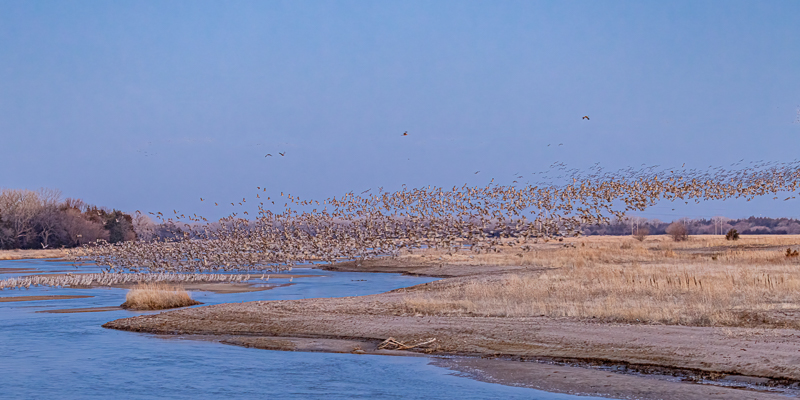
During the day, cranes can be observed by driving gravel roads through the dormant fields along the river. The most exciting way to see them is to get a spot at a public viewing area during sunrise or sunset or to pay for a place in a private viewing blind. We reserved space in a blind provided by the Ian Nicolson Audubon Center at Rowe Sanctuary. To see the morning flight, we joined a guide at 5:30 for the half-mile walk in the dark to the blind. The building is sized for ten photographers and their gear to line the open windows while waiting for the sun to rise. The group will be in place about an hour before the sun peaks over the horizon and the fantastic show begins.
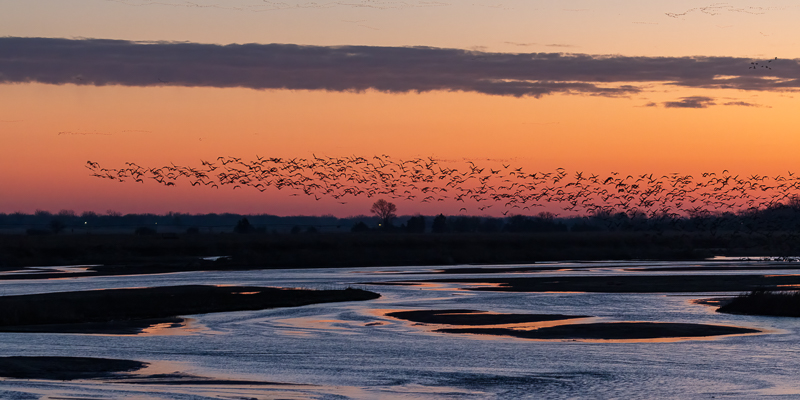
The sandhill cranes leaving their roosting site in the Platte River are spectacular. At sunrise, the cranes begin to stir and leave the shallow water where they spent the night. The cranes typically roost in large groups; around the Audubon Center, there are about 200,000 cranes in the river. The cranes lift from the water in large flocks, swirling and dancing in the sky. The birds circle to gain altitude, sometimes up to several thousand feet, before heading out to forage in the surrounding fields and wetlands. During this time, they make a distinctive trumpeting call, which can be heard from miles away. As the sun rises higher in the sky, the flocks begin to disperse, and smaller groups start to make their way to the surrounding agricultural fields to forage for food.
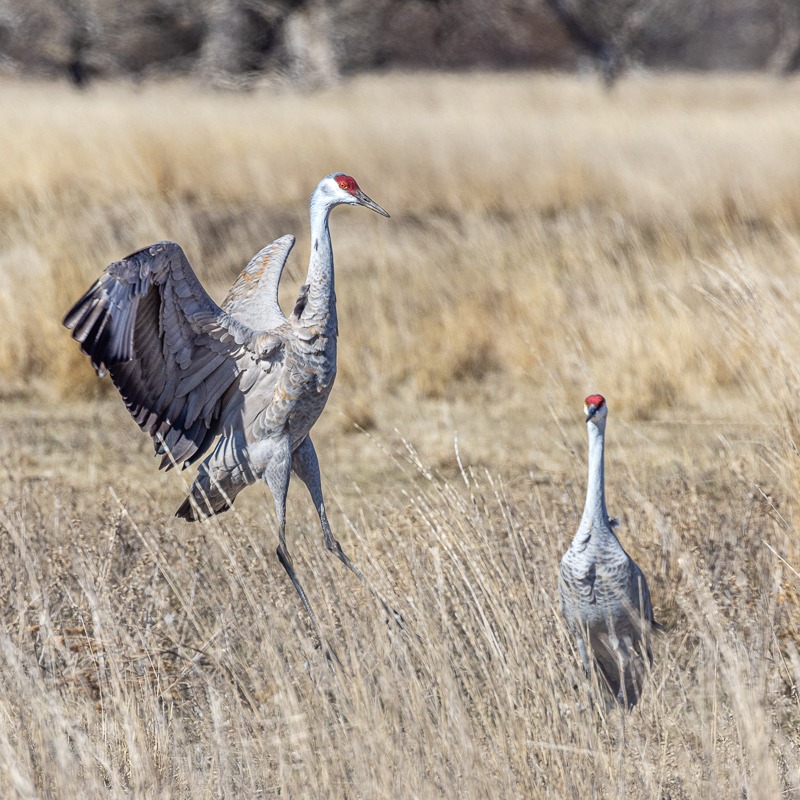
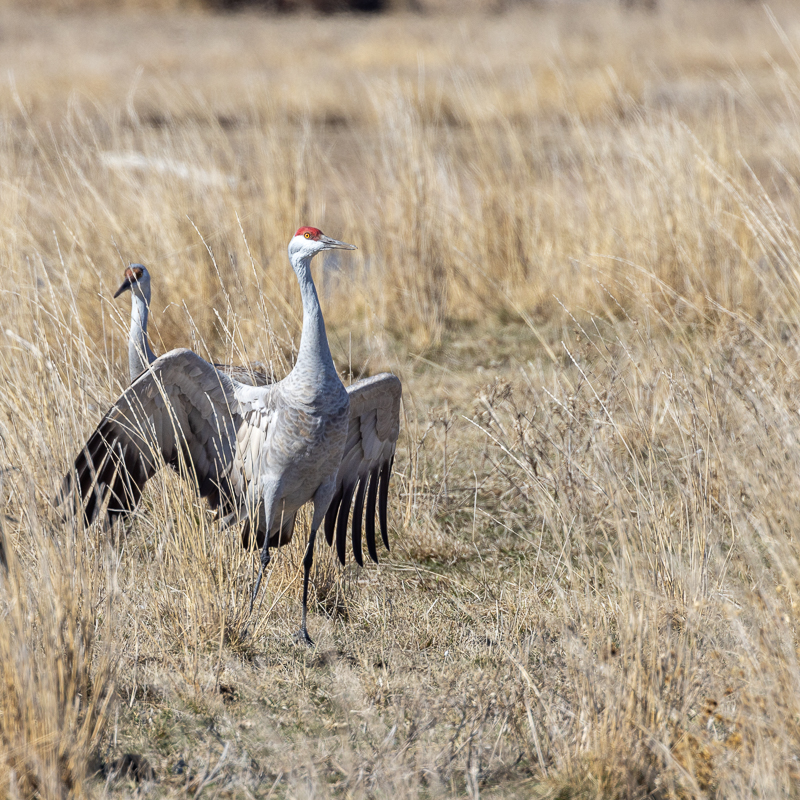
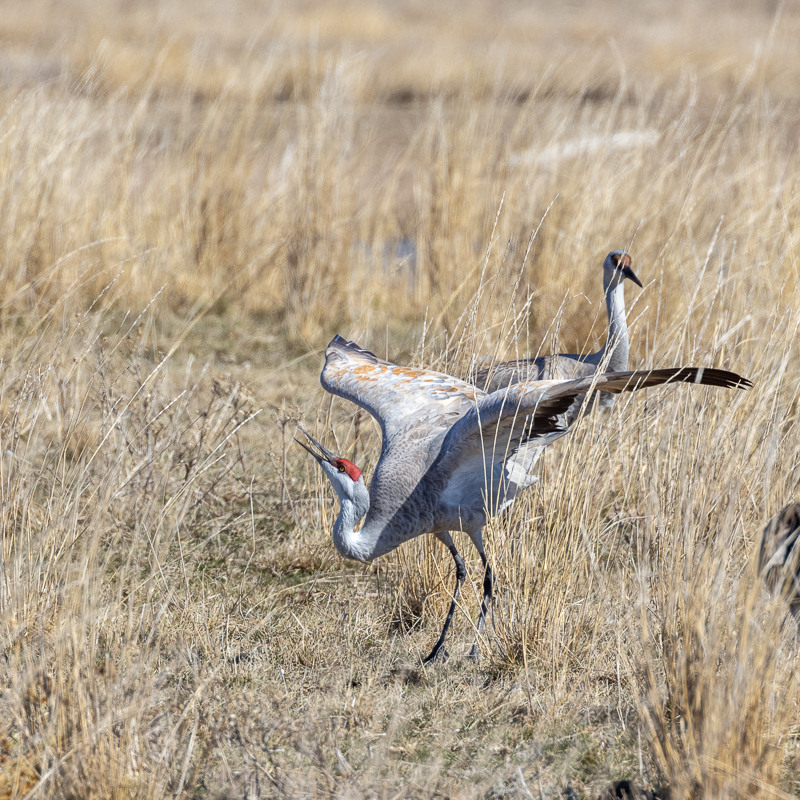
During the day the Sandhill Cranes are in the fields within a couple of miles from the Platte.
We camped at Fort Kearny State Recreation Site during our stay along the Platte River. This park has several small fishing lakes with large shade trees. The campsites are large with quite a bit of room between them. There is also a short trail to a converted railroad bridge across the Platte that is a place to see the morning flight of the cranes. Nine miles away is the city of Kearny, where we discovered another excellent coffee shop and diner combination. If you are in the area, stop by Kitts Kitchen and Coffee. It is in a rehabbed warehouse along the railroad.
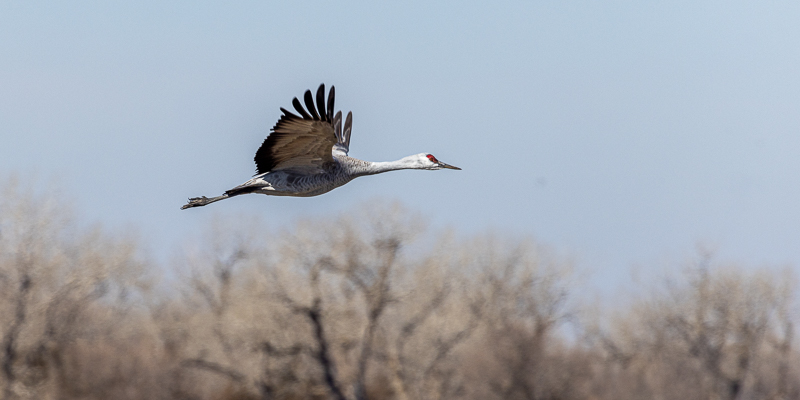
We are back in Illinois now, Sherrie has a couple more classes to teach, and then we head to the southwest for a few weeks before it gets too hot.
Dennis





Hey Dennis!
This is Tony…met you on the “bridge” in Nebraska!
Really enjoyed your site and all the pictures!!
Happy trails!!
Glad you found the site. I enjoy sharing the photos and my quirky view of the situations. Our conversation really helped pass the time on that cold bridge.
Wow, wonderful pictures Dennis and thank you for the details, love what you share!
I have come to look forward to your comments. It is fun to have you follow the blog. thank you!